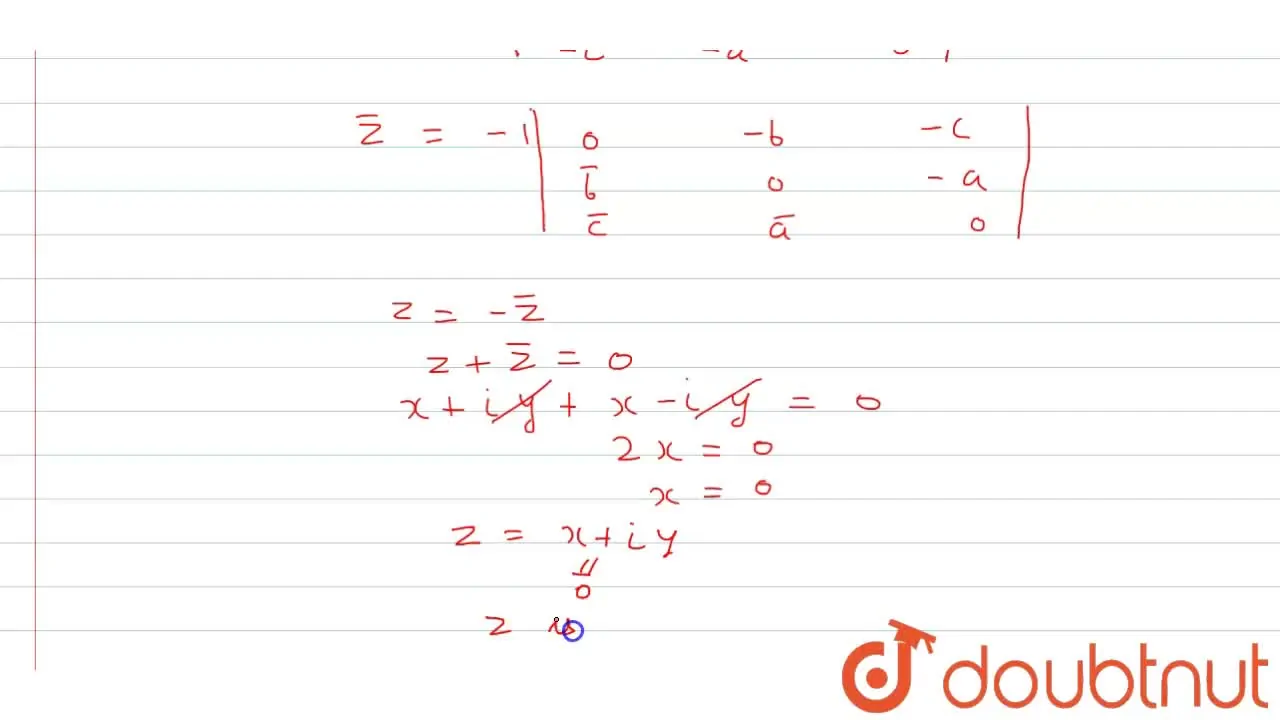If a,b,c are comples number and z=∣∣ ∣ ∣∣0−b−c¯b0−a¯c¯a0∣∣ ∣ ∣∣ then show tha z is purely imaginary
Step by step video & image solution for If a,b,c are comples number and z=|{:(,0,-b,-c),(,bar(b),0,-a),(,bar(c),bar(a),0):}| then show tha z is purely imaginary by Maths experts to help you in doubts & scoring excellent marks in Class 12 exams.
Related Playlists
- BOOK - RESONANCE ENGLISHCHAPTER - MATRICES & DETERMINANTEXERCISE - PART-II:28videos
MATRICES & DETERMINANT
- BOOK - RESONANCE ENGLISHCHAPTER - INDEFINITE INTEGRATION EXERCISE - SELF PRACTIC PROBLEMS25videos
INDEFINITE INTEGRATION
- BOOK - RESONANCE ENGLISHCHAPTER - NUMBER THEORYEXERCISE - Exercise -2 (PART - II)4videos
NUMBER THEORY
Similar Questions
If ¯z=−z≠0, show that z is necessarily a purely imaginary number
View SolutionIf a, b, c are real numbers such that ∣∣ ∣∣b+cc+aa+bc+aa+bb+ca+bb+cc+a∣∣ ∣∣=0 , then show that either a+b+c=0 or, a=b=c .
View SolutionIf z be a non-zero complex number, show that (¯¯¯¯¯¯¯z−1)=(¯z)−1
View SolutionIf a, b and c are real numbers, and Δ=∣∣ ∣∣b+cc+aa+bc+aa+bb+ca+bb+cc+a∣∣ ∣∣=0. Show that either a+b+c=0 or a=b=c
View SolutionIf a,b are complex numbers and one of the roots of the equation x2+ax+b=0 is purely real, whereas the other is purely imaginary, prove that a2−(¯a)2=4b.
View SolutionIf z is a complex number and z=¯z, then prove that z is a purely real number.
View SolutionIf z is a complex number and z=¯z, then prove that z is a purely real number.
View SolutionIf a,b,c are nonzero real numbers and az2+bz+c+i=0 has purely imaginary roots, then prove that a=b2c
View SolutionIf a,b,c are nonzero real numbers and az2+bz+c+i=0 has purely imaginary roots, then prove that a=b2c.
View SolutionIf z1=a+ib and z2+c are complex numbers such that |z1|=|z2|=1 and Re(z1¯z2)=0,
then the pair of complex numbers w1=a+ic and w2=b satisfies :View Solution


